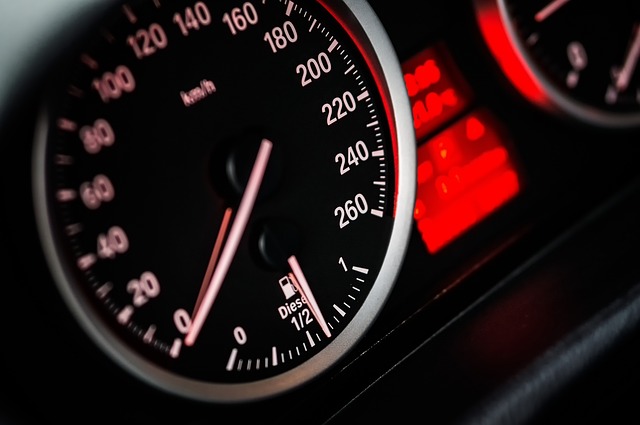Looking to register your car in California? This comprehensive guide walks you through the process, from understanding key requirements to obtaining registration plates. We break down essential steps like gathering necessary documents and completing the DMV VIN verification process. By following these clear instructions, you’ll be on your way to a smooth and efficient car registration experience in California.
- Understand California Car Registration Requirements
- Gather Necessary Documents for Vehicle Registration
- Perform DMV VIN Verification Step-by-Step
- Complete Application and Submit for Processing
- Obtain Registration Plates and Vehicle Sticker
Understand California Car Registration Requirements

Before registering your car in California, it’s crucial to understand the state’s specific requirements. The California Department of Motor Vehicles (DMV) mandates several steps for vehicle registration, including a comprehensive inspection and verification process. One key component is the DMV vin verification, which ensures that your car matches the information on its vehicle identification number (VIN). This process involves checking the car’s make, model, year, and other critical details to confirm authenticity.
Additionally, many residents opt for a mobile VIN inspection or utilize a mobile VIN verifier to streamline the initial check. These services provide convenience by performing the VIN verification on-site, saving time and effort. With these steps in mind, you’re well on your way to completing the California car registration process efficiently and correctly.
Gather Necessary Documents for Vehicle Registration

Before heading to the California Department of Motor Vehicles (DMV) to register your car, make sure you have all the required documents ready. The process begins with verifying the Vehicle Identification Number (VIN) of your vehicle, which is a crucial step in ensuring the legitimacy and history of your car. A mobile VIN verifier can be an efficient tool for this purpose, allowing you to conduct a quick and convenient VIN inspection from the comfort of your own home or garage.
Gathering these documents will streamline the registration process. You’ll need the title or current registration certificate of the vehicle, along with proof of insurance and valid identification, such as a driver’s license or state ID card. Additionally, you must present a completed Vehicle Registration Application form, which can be obtained from the DMV website or filled out at their office. Remember to bring your mobile VIN verifier results as well, ensuring that all documents are up-to-date and accurate for a smooth registration experience.
Perform DMV VIN Verification Step-by-Step

To begin the DMV VIN verification process, gather all necessary documents and ensure your vehicle is ready for inspection. This includes a valid registration, proof of insurance, and, most importantly, the vehicle’s unique Vehicle Identification Number (VIN). The DMV will use this VIN to cross-reference their records and ensure the car’s history aligns with its current state.
Follow these steps:
1. Park your car in a well-lit area for easy access to the VIN, typically found on the driver’s side of the dashboard or under the hood.
2. Open the DMV website and locate the section for VIN verification. You might need to create an account to access certain services.
3. Input your vehicle’s VIN into the provided field. For added convenience, consider using a mobile vin verifier or mobile vin inspection service that allows you to perform this step remotely.
4. Follow any on-screen prompts and provide additional information if required, such as proof of ownership or previous registration details.
5. Submit your request and await approval from the DMV. This process can often be completed within minutes, especially with digital tools like a mobile vin verification service streamlining the procedure.
Complete Application and Submit for Processing

Once you’ve gathered all the necessary documents, it’s time to complete the registration process with a DMV vin verification. Fill out the application form thoroughly, ensuring every detail is accurate and matching your vehicle’s information. This includes your personal details, the car’s make, model, year, and unique VIN (Vehicle Identification Number). Submitting this form initiates the process of registering your car in California.
After submission, the DMV will perform a vin inspection to cross-reference the provided data with their records. They’ll verify the vehicle’s ownership, history, and any outstanding issues. This step is crucial for ensuring a smooth registration process and preventing fraud. For added convenience, some services offer mobile vin verification, allowing you to complete this process from the comfort of your home or even while on the go.
Obtain Registration Plates and Vehicle Sticker

After completing your vehicle’s registration application at the California DMV, it’s time to obtain your official registration plates and vehicle sticker. This crucial step involves a process known as VIN (Vehicle Identification Number) verification, ensuring that your car meets all legal requirements. You can perform this vin inspection either at a designated DMV location or opt for a convenient mobile vin inspection service.
For a seamless experience, choose a reliable provider offering on-site or mobile vin verification. This allows you to quickly receive your registration plates and stickers, enabling you to legally drive your vehicle on California roads. Remember, having these essential documents ensures your car is compliant with state regulations, preventing any potential issues during future inspections.
Registering a car in California involves understanding clear requirements, gathering essential documents, and completing crucial steps like DMV VIN verification. By following this process diligently, you can ensure your vehicle is legally registered and ready to hit the road. Remember to keep your registration up-to-date for smooth driving experiences in the Golden State.
